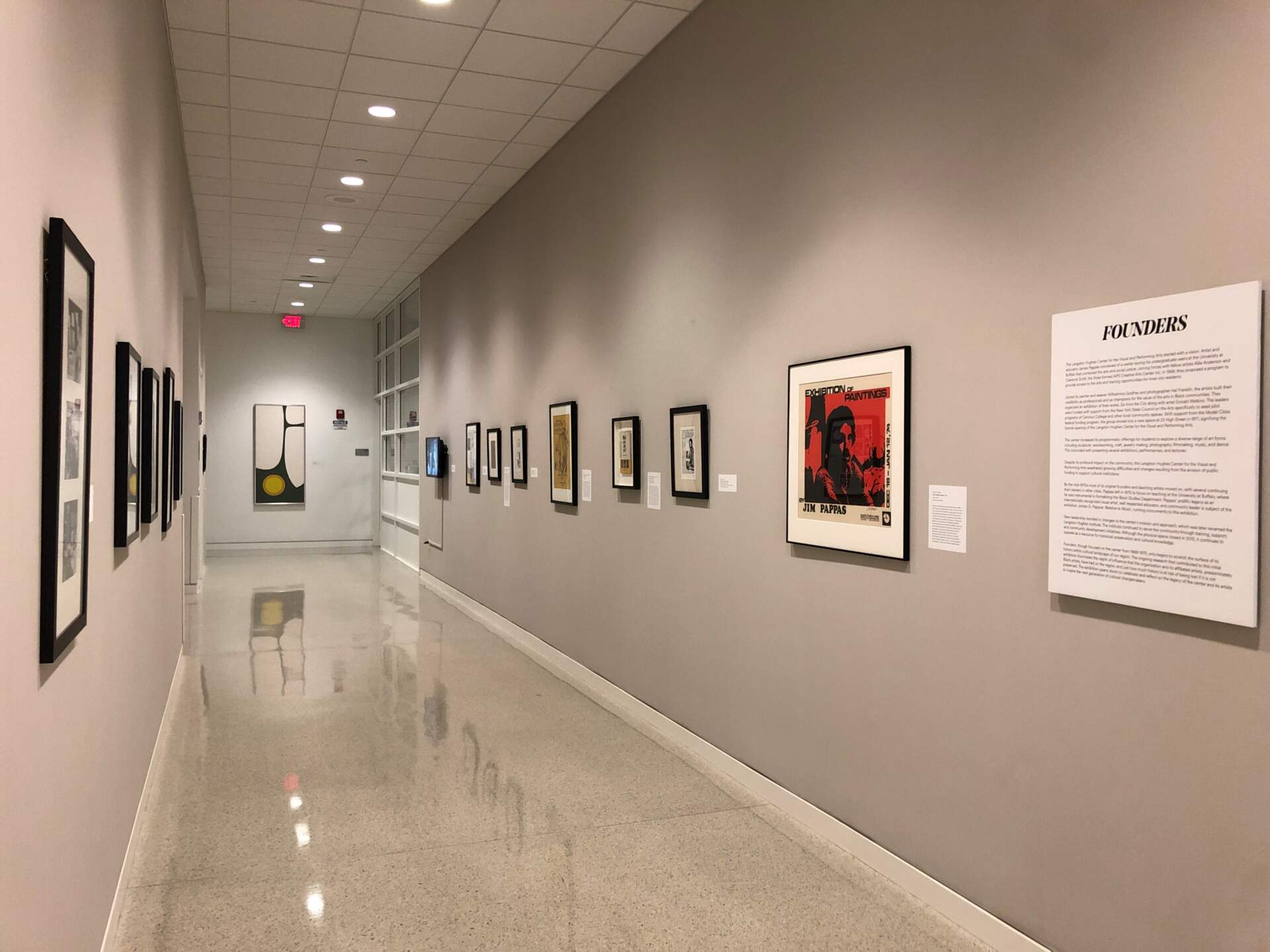
Founders
The Early History of the Langston Hughes Center for the Visual and Performing Arts
Past
Oct 8, 2021 - May 29, 2022
It started with a vision. Artist and educator James Pappas theorized a center during his undergraduate years at the University at Buffalo that combined the arts and social justice by providing access to the arts and training opportunities for inner city residents. Pappas, joining forces with fellow artists Allie Anderson and Clarence Scott, formed what would ultimately become the Langston Hughes Center for the Visual and Performing Arts.
The three artists formalized their ideas, establishing APS Creative Arts Center, Inc. as a non-profit organization in 1968. Joined by painter and weaver Wilhelmina Godfrey and photographer Hal Franklin, the artists built their credibility as professionals and as champions for the value of the arts in Black communities, organizing an exhibition of their works, Six from the City along with artist Donald Watkins in 1968. The five leaders of the center also utilized funding from the New York State Council on the Arts to seed pilot programs at Canisius College and other local community spaces in 1969 and 1970.
With support from the Model Cities federal funding program, the group moved into a new space at 25 High Street in 1971, signifying the formal opening of the Langston Hughes Center for the Visual and Performing Arts. The center increased its offering of workshops for students to explore a diverse range of art forms including sculpture, woodworking, craft, jewelry making, photography, filmmaking, music, and dance in addition to hosting several exhibitions, performances, and lectures.
Despite its profound impact on the community, the Langston Hughes Center for the Visual and Performing Arts weathered growing difficulties and changes resulting from the erosion of public funding to support cultural institutions. By the mid-1970s most of its original founders and teaching artists moved on, with several continuing their careers in other cities. Pappas left in 1975 to focus on teaching at the University at Buffalo, where he was instrumental in formalizing the Black Studies Department. Pappas’ prolific legacy as an internationally recognized visual artist, well respected educator, and community leader is subject of the exhibition James G. Pappas: Relative to Music, running concurrently to this exhibition.
New leadership resulted in changes to the center’s mission and approach, which was later renamed the Langston Hughes Institute. The institute continued to serve the community through training, support, and community development initiatives. Though no longer physically present on High Street, it continues to operate as a resource for historical preservation and cultural knowledge.
The Langston Hughes Center for the Visual and Performing Arts was one of several cultural institutions formed in Buffalo during the late 1960s and 1970s that was committed to serving underrepresented communities through workshops, classes, exhibitions, and other events. Its founding, along with the birth of organizations like the African American Cultural Center, the Center for Positive Thought, The Buffalo Black Drama Workshop, the Black Dance Workshop, and Ujima Theatre Company, among others, represented a subtle, yet powerful organizational effort to make space for Black art during the profound social, political, and cultural moment of the Black Arts Movement.
The Black Arts Movement, a Black nationalism movement from the mid-1960s- mid-1970s, is characterized by its emphasis on Black self-determination, community, and culture, with artists and intellectuals reclaiming their own imagery and stories being put out in the world.[1] A cultural complement to the Black Power movement, these ideologies circulated across communities on a national and international scale. Spreading locally across college campuses with the formation of Black student unions and liberation fronts and expanding into the community with the grassroots organization of institutions like the Langston Hughes Center for the Visual and Performing Arts, this legacy is a testament to the presence of the Black Arts Movement right here in Buffalo.
Founders, though focused on the formative years of the center from 1968-1975, only begins to scratch the surface of its history within cultural landscape of our region. The ongoing research that contributed to this initial exhibition illuminates the depth of influence that the organization and its affiliated artists, predominately Black artists, have had on the region, and just how much history is at risk of being lost if it is not preserved. This research would not have been possible without the assistance of Lorna Peterson, Heather Gring, Gail Wells, James G. Pappas, Clarence Scott, Michael Hill, Dorothy Hill and Challenger Community News. Many thanks to these valued community members who continue to assist with telling this important story. As groups like Frontline Arts Buffalo (FAB) continue to advocate for institutions today, it is also important to acknowledge and reflect on the trajectories of the institutions of the past so that they may serve as a model to learn from for the future. The exhibition opens doors to celebrate and reflect on the legacy of the center and its artists to inspire the next generation of cultural changemakers.
[1] “Black Arts Movement,” National Archives, https://www.archives.gov/research/african-americans/black-power/arts